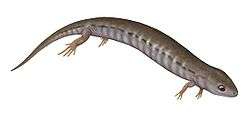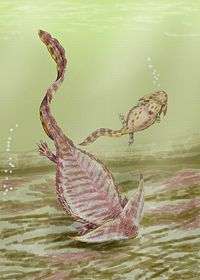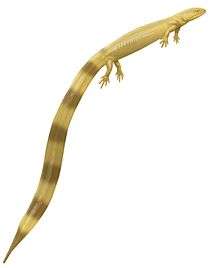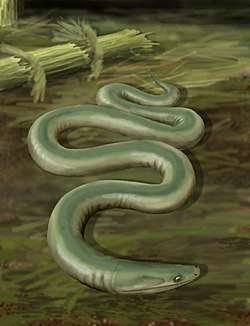Diplocaulidae
The Diplocaulidae ("double cauls") is an extinct family of lepospondyl amphibians that arose during the Late Carboniferous and died out in the Late Permian. [1] They are distinguished from other amphibians, extinct and extant, by the presence of strange, horn-like protrusions jutting out from the rear of their skulls; in some genera said protrusions gave their heads an almost boomerang-like outline.
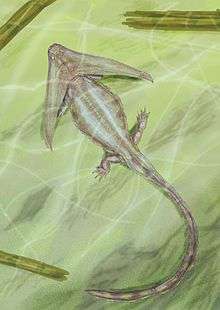
Diploceraspis burkei
| Diplocaulidae Temporal range: Late Carboniferous - Late Permian | |
|---|---|
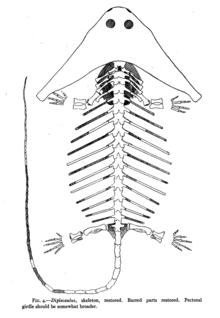 | |
| A skeletal diagram of Diplocaulus | |
| Scientific classification | |
| Kingdom: | Animalia |
| Phylum: | Chordata |
| Subclass: | †Lepospondyli |
| Order: | †Nectridea |
| Family: | †Diplocaulidae Cope, 1881 |
| Subgroups | |
| Synonyms | |
Phylogeny
Below is a cladogram modified from Germain (2010):[1]
| Nectridea |
| |||||||||||||||||||||||||||||||||||||||||||||||||||||||||
gollark: Haskell.
gollark: Yes, but simpler ones are probably going to be developed sooner.
gollark: <@319753218592866315> It's probably simpler to develop some totally ahuman AI than a human one.
gollark: Oh no.
gollark: You can have intelligence without human-like values and stuff.
References
- Germain, D. (2010). "The Moroccan diplocaulid: the last lepospondyl, the single one on Gondwana". Historical Biology. 22 (1–3): 4–39. doi:10.1080/08912961003779678.
This article is issued from Wikipedia. The text is licensed under Creative Commons - Attribution - Sharealike. Additional terms may apply for the media files.
